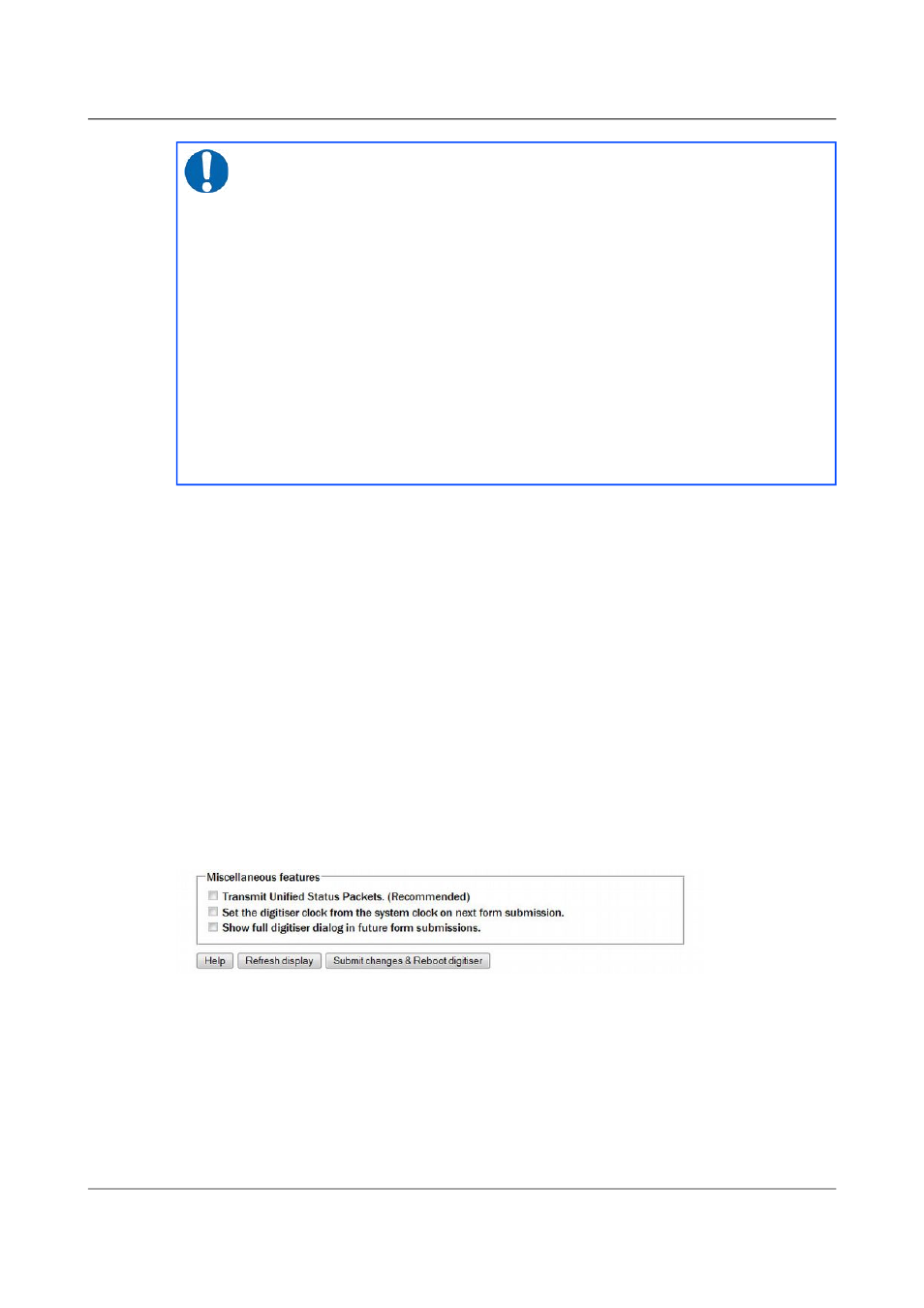Guralp Systems CMG-DCM build <10,000 User Manual
Page 113

Acquisition Modules and Platinum Firmware
Digitiser Configuration
Note: For CMG-DAS systems, the digitiser's “Data out” port is
connected internally to the CMG-EAM module's “Port A” and both
ports must use the same Baud rate. The digitiser's “Data in” port is
used to provide a console for the digitiser (without interrupting
seismic data transmission) and is connected internally to the
CMG-EAM module's “Port B”. Again, both ports must use the same
Baud rate. The digitiser's “GPS” port is connected to the CMG-EAM
module's “Port C”. This connection can be used in two ways: the
acquisition module module can share with the digitiser the data
from the physical GPS receiver and use it as an NTP clock source
(see section 7.4 on page 84); or, alternatively, the acquisition module
module can be synchronised to another time source (such as
Internet NTP) and provide NMEA signals to the digitiser module. In
either case, the digitiser module's “GPS” port and the acquisition
module module's “Port C” must use the same Baud rate.
If a stand-alone digitiser or digital instrument is fitted with a Lantronix
Ethernet or WiFi option, it uses the “Data out” port settings for its internal
communications with the digitiser. Changing the associated Baud rate
requires making a network connection to the Lantronix unit's web interface
and selecting the matching baud rate from its control page.
8.1.1.13 Miscellaneous features and Submission
The final section of the digitiser control web page is entitled “Miscellaneous
features”. This section displays a warning in red if a discrepancy is detected
between the EAM's time and the digitiser's own clock. If the two clocks have
reasonable synchronisation, this message is suppressed. A typical warning
looks like this:
Digitiser clock is displaced by more than 5 minutes from the system clock.
(Plus 7 minutes).
This section of the page is shown here without the warning:
The first check-box enables the transmission of Unified Status Packets.
Unified Status Packets are a machine-readable representation of the data
carried in the normal, human-readable status streams and allow programs
such as Scream to access complete and consistent state-of-health information
regardless of any status stream customisations.
113
Issue E - February 2014